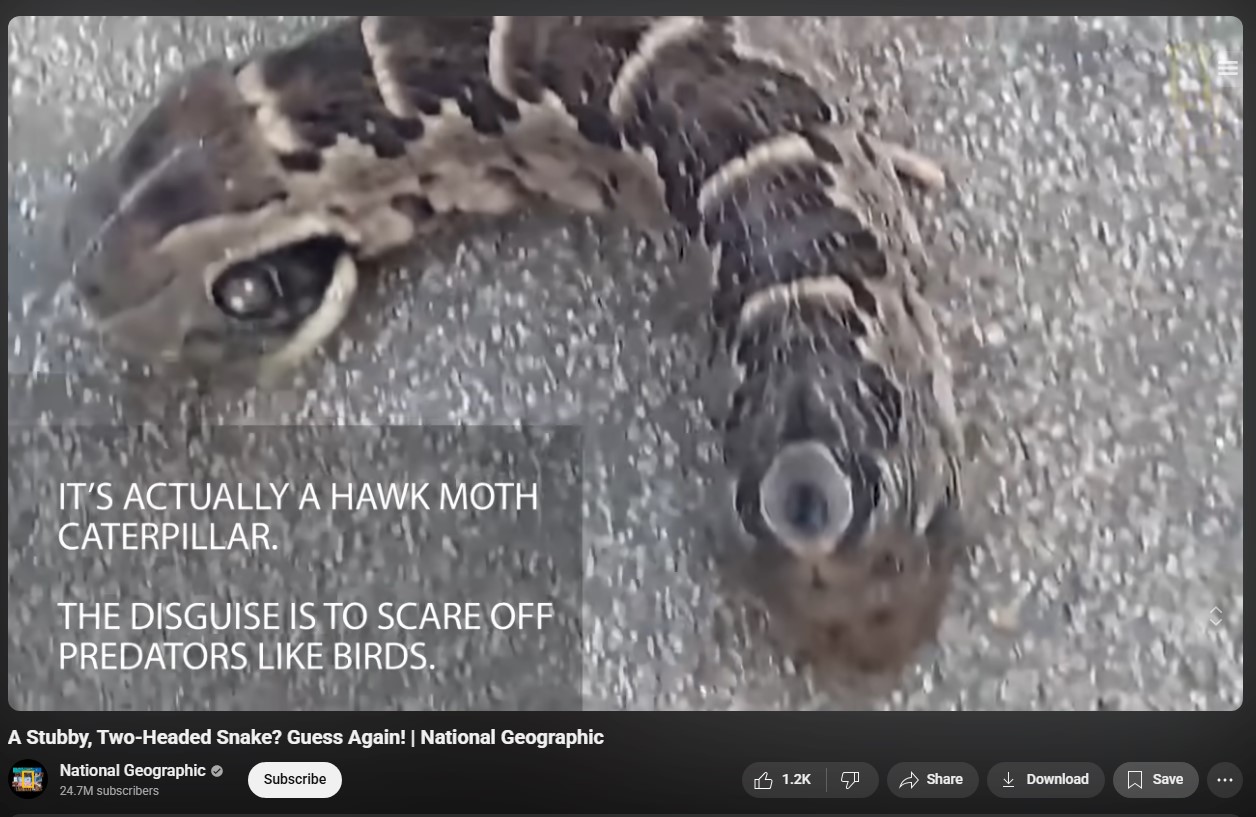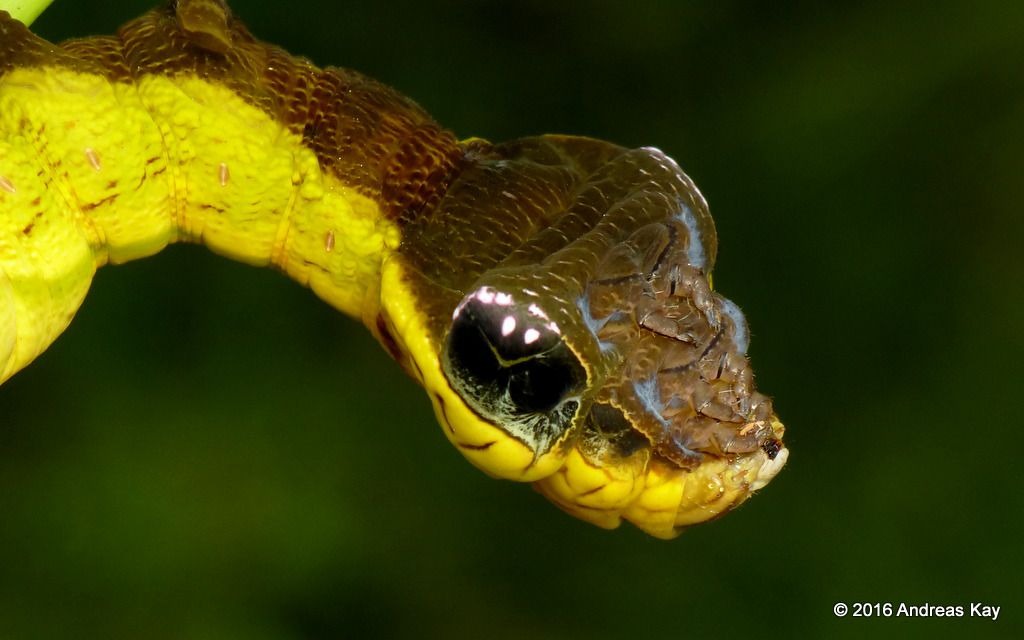A Startling Encounter in Santa Fe, Argentina
In the quiet town of Santa Fe, Argentina, 46-year-old resident Luján Eroles experienced a moment of disbelief when she discovered an unusual creature in her garden. What initially appeared to be a small, two-headed snake quickly turned out to be something far more extraordinary: a rare species of caterpillar with an uncanny resemblance to a serpent.
Measuring just 10 centimeters long, the caterpillar’s appearance shocked Eroles and drew the attention of curious neighbors. As they gathered to observe the creature, discussions quickly turned to what it could be, with some speculating it might be a mutant animal or a poisonous snake.

“I have never seen anything like it,” Eroles told National Geographic. “Its eyes were so strange. I was afraid it was poisonous.”
Viral Video Sparks Global Curiosity
Uncertain about the nature of the animal and concerned for her safety, Eroles took a short video of the encounter and uploaded it online. The footage rapidly went viral, prompting thousands of viewers across the globe to weigh in with theories and explanations.

Source: Youtube
The video’s popularity drew the attention of wildlife experts, biologists, and entomology enthusiasts who quickly recognized the creature’s true identity: a rare species of moth caterpillar known for its remarkable mimicry abilities.
Identifying the “Snake Caterpillar”

According to experts, the creature is a species of moth caterpillar—likely a Hemeroplanes triptolemus caterpillar, which is known for mimicking the appearance of a snake as a defense mechanism. While Eroles and others believed the creature might have two heads or venomous features, its snake-like form is actually an evolutionary adaptation meant to fool predators.
The caterpillar belongs to a group of insects native to Central and South America, and while it is not commonly encountered, it is well-documented in the scientific community for its impressive mimicry.
How the Mimicry Works

The caterpillar’s most distinctive feature is the pair of large eye-like spots located on the section behind its head. When threatened, the insect can expand this segment and lift its body to resemble a small snake ready to strike. This illusion often deters birds, reptiles, and other predators from approaching.
Despite the intimidating appearance, the caterpillar is completely harmless to humans. It lacks venom and does not pose any health risk. Its only “weapon” is its ability to look like something far more dangerous than it truly is.
This survival tactic, known as Batesian mimicry, is common in the animal kingdom. It occurs when a harmless species evolves to imitate the warning signals of a more dangerous or unpalatable species. In this case, by looking like a snake, the caterpillar reduces its chances of being eaten.
Not to Be Confused with the Elephant Hawk-Moth Caterpillar

Some viewers online mistakenly identified the creature as an Elephant Hawk-Moth Caterpillar (Deilephila elpenor), a species found in Europe and parts of Asia that also mimics snakes. However, the Elephant Hawk-Moth caterpillar is unlikely to be found in Argentina and is genetically distinct from Hemeroplanes triptolemus.
Both caterpillars share similar defense mechanisms—large eye-like markings, snake-like posture, and the ability to puff up their body segments—but they belong to different genera and are native to different continents.
Nature’s Ingenious Designs

The discovery of this caterpillar highlights the extraordinary lengths to which evolution has adapted certain species for survival. In the absence of claws, teeth, or venom, mimicry provides an effective way for defenseless creatures to evade predators in hostile environments.
These adaptations are particularly vital during the larval stage, when insects are most vulnerable. Once the caterpillar completes its metamorphosis, it transforms into a moth and loses its snake-like appearance.
This species is believed to eventually become a member of the Sphingidae family, commonly referred to as sphinx or hawk moths. These moths are known for their impressive flight capabilities and play important roles in pollination.
The Public’s Reaction and Educational Value

Eroles’ encounter may have been accidental, but it sparked a wave of fascination and educational discussion online. As the video circulated, many viewers expressed surprise at how convincing the mimicry was, while others shared similar stories of confusing insects with more dangerous animals.
Wildlife experts encourage people to observe such animals with caution but also appreciation. These moments offer teachable opportunities to understand biodiversity and ecological balance.
“Encounters like this are reminders of how little we still know about the natural world,” said one entomologist in response to the viral footage. “They’re not just cool to look at—they tell stories of survival, adaptation, and the interconnectedness of ecosystems.”
Final Thoughts: Beauty in the Unexpected

Luján Eroles’ garden discovery is more than a viral curiosity—it is a testament to the wonders of evolution and the creativity of nature. What first appeared as something terrifying turned out to be a completely harmless caterpillar, doing what it must to survive.
Her experience shows that even in familiar places like backyards or gardens, nature still holds surprises. As environmental awareness grows, moments like these remind us of the importance of conservation and biodiversity education.
